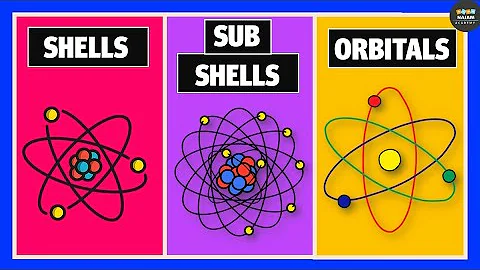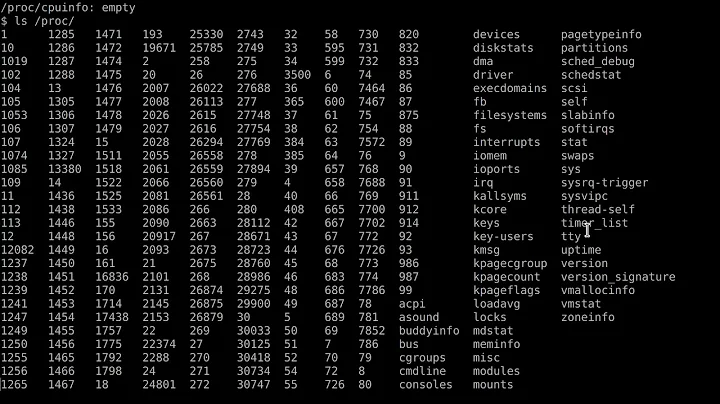Rule for invoking subshell in Bash?
Solution 1
The parentheses always start a subshell. What's happening is that bash detects that sleep 5 is the last command executed by that subshell, so it calls exec instead of fork+exec. The sleep command replaces the subshell in the same process.
In other words, the base case is:
-
( … )create a subshell. The original process callsforkandwait. In the subprocess, which is a subshell:-
sleepis an external command which requires a subprocess of the subprocess. The subshell callsforkandwait. In the subsubprocess:- The subsubprocess executes the external command →
exec. - Eventually the command terminates →
exit.
- The subsubprocess executes the external command →
-
waitcompletes in the subshell.
-
-
waitcompletes in the original process.
The optimization is:
-
( … )create a subshell. The original process callsforkandwait. In the subprocess, which is a subshell until it callsexec:-
sleepis an external command, and it's the last thing this process needs to do. - The subprocess executes the external command →
exec. - Eventually the command terminates →
exit.
-
-
waitcompletes in the original process.
When you add something else after the call the sleep, the subshell needs to be kept around, so this optimization can't happen.
When you add something else before the call to sleep, the optimization could be made (and ksh does it), but bash doesn't do it (it's very conservative with this optimization).
Solution 2
From the Advanced Bash Programming Guide:
"In general, an external command in a script forks off a subprocess, whereas a Bash builtin does not. For this reason, builtins execute more quickly and use fewer system resources than their external command equivalents."
And a little further down:
"A command list embedded between parentheses runs as a subshell."
Examples:
[root@talara test]# echo $BASHPID
10792
[root@talara test]# (echo $BASHPID)
4087
[root@talara test]# (echo $BASHPID)
4088
[root@talara test]# (echo $BASHPID)
4089
Example using OPs code (with shorter sleeps because I am impatient):
echo $BASHPID
sleep 2
(
echo $BASHPID
sleep 2
echo $BASHPID
)
The output:
[root@talara test]# bash sub_bash
6606
6608
6608
Solution 3
An additional note to @Gilles answer.
As said by Gilles: The parentheses always start a subshell.
However, the numbers that such sub-shell have might repeat:
$ (echo "$BASHPID and $$"; sleep 1)
2033 and 31679
$ (echo "$BASHPID and $$"; sleep 1)
2040 and 31679
$ (echo "$BASHPID and $$"; sleep 1)
2047 and 31679
As you can see, the $$ keeps repeating, and that is as expected, because (execute this command to find the correct man bash line):
$ LESS=+/'^ *BASHPID' man bash
BASHPID
Expands to the process ID of the current bash process. This differs from $$ under certain circumstances, such as subshells that do not require bash to be re-initialized.
That is: If the shell is not re-initialized, the $$ is the same.
Or with this:
$ LESS=+/'^ *Special Parameters' man bash
Special Parameters
$ Expands to the process ID of the shell. In a () subshell, it expands to the process ID of the current shell, not the subshell.
The $$ is the ID of the current shell (not the subshell).
Related videos on Youtube
bashful
Updated on September 18, 2022Comments
-
bashful over 1 year
I seem to misunderstand the Bash rule for creating a subshell. I thought parentheses always creates a subshell, which runs as its own process.
However, this doesn't seem to be the case. In Code Snippet A (below), the second
sleepcommand does not run in a separate shell (as determined bypstreein another terminal). However, in Code Snippet B, the secondsleepcommand does run in a separate shell. The only difference between the snippets is that the second snippet has two commands within the parentheses.Could somebody please explain the rule for when subshells are created?
CODE SNIPPET A:
sleep 5 ( sleep 5 )CODE SNIPPET B:
sleep 5 ( x=1 sleep 5 ) -
bashful almost 12 yearsThanks for the reply Tim. I'm not sure it fully answers my question though. Since "A command list embedded between parentheses runs as a subshell", I would expect the second
sleepto run in a subshell (perhaps on the subshell's process since it's a built-in, rather than a subprocess of the subshell). However, in any case, I would have expected a subshell to exist, i.e. a Bash subprocess under the parent Bash process. For Snippet B above, this doesn't seem to be the case. -
bashful almost 12 yearsCorrection: Because
sleepdoesn't seem to be a built-in, I would expect the secondsleepcall in both snippets to run in a subprocess of the subshell process. -
Daniel Serodio over 7 yearsNice trick for opening the bash manpage in a specific section
-
 haccks about 6 yearsSubshell is created by calling
haccks about 6 yearsSubshell is created by callingforkand child process is created (to execute external commands) by callingfork + exec. But your first para suggests thatfork + execis called for subshell too. What I am getting wrong here? -
 Gilles 'SO- stop being evil' about 6 years@haccks
Gilles 'SO- stop being evil' about 6 years@haccksfork+execis not called for the subshell, it's called for the external command. Without any optimization, there's aforkcall for the subshell and another one for the external command. I've added a detailed flow description to my answer. -
 haccks about 6 yearsThanks a ton for the update. Now it explains better. I can deduce from it that in case of
haccks about 6 yearsThanks a ton for the update. Now it explains better. I can deduce from it that in case of(...)(in base case), there may or may not be a call toexecdepends on whether the subshell has any external command to execute, while in case of executing any external command there must befork + exec. -
 haccks about 6 yearsOne more question: Is this optimisation works only for subshell or it can be done for a command like
haccks about 6 yearsOne more question: Is this optimisation works only for subshell or it can be done for a command likedatein a shell? -
 Gilles 'SO- stop being evil' about 6 years@haccks I don't understand the question. This optimization is about invoking an external command as the last thing a shell process does. It isn't restricted to subshells: compare
Gilles 'SO- stop being evil' about 6 years@haccks I don't understand the question. This optimization is about invoking an external command as the last thing a shell process does. It isn't restricted to subshells: comparestrace -f -e clone,execve,write bash -c 'date'andstrace -f -e clone,execve,write bash -c 'date; true' -
 haccks about 6 yearsI am talking about a simple command in a shell:
haccks about 6 yearsI am talking about a simple command in a shell:date. As it is an external command so shell will firstforka new process and then useexec. But is that the case that shell only callexecasdateis the only command to processed by the shell? -
 Gilles 'SO- stop being evil' about 6 years@haccks It depends on the shell, on what comes before the command and on what's around it. Calling
Gilles 'SO- stop being evil' about 6 years@haccks It depends on the shell, on what comes before the command and on what's around it. Callingexecdirectly is an optimization. -
 haccks about 6 yearsConsidering bash and the only command is
haccks about 6 yearsConsidering bash and the only command isdate(nothing around it).




